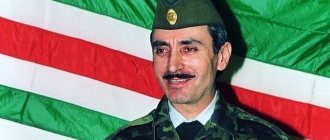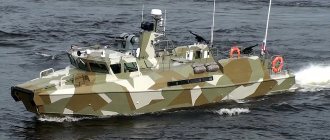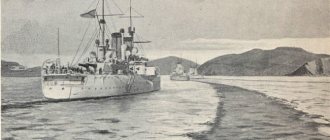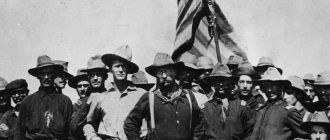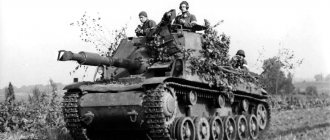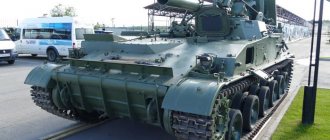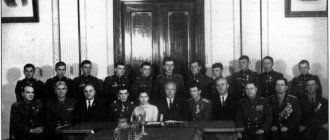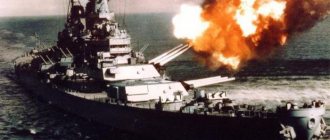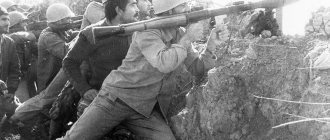There are many wars written into the history of Russia. Most of them were liberation, some began on our territory and ended far beyond its borders. But there is nothing worse than such wars, which were started as a result of the illiterate actions of the country’s leadership and led to terrifying results because the authorities solved their own problems without paying attention to the people.
One of such sad pages of Russian history is the Chechen war. This was not a confrontation between two different peoples. There were no absolute rights in this war. And the most surprising thing is that this war still cannot be considered over.
Prerequisites for the start of the war in Chechnya
It is hardly possible to talk about these military campaigns briefly. The era of perestroika, so pompously announced by Mikhail Gorbachev, marked the collapse of a huge country consisting of 15 republics. However, the main difficulty for Russia was that, left without satellites, it was faced with internal unrest that had a nationalistic character. The Caucasus turned out to be especially problematic in this regard.
Back in 1990, the National Congress of the Chechen People was created. This organization was headed by Dzhokhar Dudayev, a former major general of aviation in the Soviet Army. The Congress set its main goal to secede from the USSR; in the future, it was planned to create a Chechen Republic, independent of any state.
In the summer of 1991, a situation of dual power arose in Chechnya, since both the leadership of the Chechen-Ingush Autonomous Soviet Socialist Republic itself and the leadership of the so-called Chechen Republic of Ichkeria, proclaimed by Dudayev, acted.
This state of affairs could not exist for long, and in September the same Dzhokhar and his supporters seized the republican television center, the Supreme Council and the Radio House. This was the beginning of the revolution. The situation was extremely precarious, and its development was facilitated by the official collapse of the country carried out by Yeltsin. Following the news that the Soviet Union no longer existed, Dudayev's supporters announced that Chechnya was seceding from Russia.
The separatists seized power - under their influence, parliamentary and presidential elections were held in the republic on October 27, as a result of which power was completely in the hands of ex-General Dudayev. And a few days later, on November 7, Boris Yeltsin signed a decree stating that a state of emergency was being introduced in the Chechen-Ingush Republic. In fact, this document became one of the reasons for the start of the bloody Chechen wars.
At that time, there was quite a lot of ammunition and weapons in the republic. Some of these reserves had already been captured by the separatists. Instead of blocking the situation, the Russian leadership allowed it to get even more out of control - in 1992, the head of the Ministry of Defense Grachev transferred half of all these reserves to the militants. The authorities explained this decision by saying that it was no longer possible to remove weapons from the republic at that time.
However, during this period there was still an opportunity to stop the conflict. An opposition was created that opposed Dudayev's power. However, after it became clear that these small detachments could not resist the militant formations, the war was practically already underway.
Yeltsin and his political supporters could no longer do anything, and from 1991 to 1994, Chechnya was actually a republic independent of Russia. It had its own government bodies and had its own state symbols. In 1994, when Russian troops were brought into the territory of the republic, a full-scale war began. Even after the resistance of Dudayev’s militants was suppressed, the problem was never completely resolved.
Speaking about the war in Chechnya, it is worth considering that the fault for its outbreak, first of all, was the illiterate leadership of first the USSR and then Russia. It was the weakening of the internal political situation in the country that led to the weakening of the outskirts and the strengthening of nationalist elements.
As for the essence of the Chechen war, there is a conflict of interests and an inability to govern a vast territory on the part of first Gorbachev and then Yeltsin. Subsequently, it was up to the people who came to power at the very end of the twentieth century to untie this tangled knot.
Evgeny Kiselyov: “No, did you see it?! Have you seen it?!”
So, the second invasion of the “federals” into Chechnya was already strictly supported by state television channels and newspapers - proper work was carried out with them with clear instructions. Only NTV again somewhat bent its line. There was a funny episode in Yevgeny Kiselyov’s “Itogi” program in 2000 - in it, an NTV correspondent located in Grozny appeared live in the frame. He began to say something about the arbitrariness of the “federals,” and then he was simply pushed out of the stand-up spot by some people in spotted uniforms. Kiselyov just kept repeating: “No, did you see it?!” Have you seen it?!” Yes, it was not yet common then—pressure on the press. Now, remembering that scene, something else is surprising - how all sorts of “wrong” journalists were allowed into the battlefields, which were directly related to raising the ratings of the future president of the Russian Federation. Now this is no longer possible. At least, through official channels in several senses of the word.
First Chechen war 1994-1996
Historians, writers and filmmakers are still trying to assess the scale of the horrors of the Chechen war. No one denies that it caused enormous damage not only to the republic itself, but to all of Russia. However, it is worth considering that the nature of the two campaigns was quite different.
During the Yeltsin era, when the first Chechen campaign of 1994-1996 was launched, Russian troops could not act coherently and freely enough. The country's leadership solved its problems, moreover, according to some information, many people profited from this war - weapons were supplied to the territory of the republic from the Russian Federation, and militants often made money by demanding large ransoms for hostages.
At the same time, the main task of the Second Chechen War of 1999-2009 was the suppression of gangs and the establishment of constitutional order. It is clear that if the goals of both campaigns were different, then the course of action was significantly different.
On December 1, 1994, airstrikes were carried out on airfields located in Khankala and Kalinovskaya. And already on December 11, Russian units were introduced into the territory of the republic. This fact marked the beginning of the First Campaign. Entry was carried out from three directions at once - through Mozdok in North Ossetia, through Ingushetia and through Dagestan.
By the way, at that time the Ground Forces were led by Eduard Vorobiev, but he immediately resigned, considering it unwise to lead the operation, since the troops were completely unprepared for conducting full-scale combat operations.
At first, Russian troops advanced quite successfully. The entire northern territory was occupied by them quickly and without much loss. From December 1994 to March 1995, the Russian Armed Forces stormed Grozny. The city was built up quite densely, and Russian units were simply stuck in skirmishes and attempts to take the capital.
Russian Defense Minister Grachev expected to take the city very quickly and therefore did not spare human and technical resources. According to researchers, more than 1,500 Russian soldiers and many civilians of the republic died or went missing near Grozny. The armored vehicles also suffered serious damage - almost 150 units were damaged.
However, after two months of fierce fighting, federal troops finally took Grozny. Participants in the hostilities subsequently recalled that the city was destroyed almost to the ground, and this is confirmed by numerous photographs and video documents.
During the assault, not only armored vehicles were used, but also aviation and artillery. There were bloody battles on almost every street. The militants lost more than 7,000 people during the operation in Grozny and, under the leadership of Shamil Basayev, on March 6 they were forced to finally leave the city, which came under the control of the Russian Armed Forces.
However, the war, which brought death to thousands of not only armed but also civilians, did not end there. The fighting continued first on the plains (from March to April), and then in the mountainous regions of the republic (from May to June 1995). Argun, Shali, and Gudermes were taken successively.
The militants responded with terrorist attacks carried out in Budennovsk and Kizlyar. After varying successes on both sides, a decision was made to negotiate. And as a result, on August 31, 1996, the Khasavyurt Agreements were concluded. According to them, federal troops were leaving Chechnya, the republic's infrastructure was to be restored, and the question of independent status was postponed.
Shamanov, Troshev, Kazantsev, Budanov
For almost the entire month of September, the territory of Chechnya was bombed, and on the 30th, ground units of the Russian Armed Forces began to enter the republic. Fierce fighting began on the ground. Again, like several years ago, the terrible “cargo 200” began to arrive in Russia. But heroes in uniform appeared again, and the Chechen wars opened up for Russians new names among high-ranking military personnel, who in a short time became very popular. The face of the first war was General Lev Rokhlin, who was shot dead at his dacha in 1998 under very strange circumstances. It is known that he planned to remove President Yeltsin from his post. You could say it was an armed coup. But 1999 added big names. First of all, these are generals Vladimir Shamanov, Gennady Troshev, Viktor Kazantsev. The last two are no longer alive, but Shamanov headed the Airborne Forces for a long time in the 2000s and is now a State Duma deputy. Of course, the Kremlin was jealous of the glory of military generals, as if one of them wanted to become a “Russian Pinochet.” It worked out. One cannot help but say about Colonel Yuri Budanov, who served 8 years for the murder of the 18-year-old Chechen girl Elza Kungaeva. She was taken to Budanov’s headquarters on suspicion of being a gunner for the militants. Much was written about this matter at one time. The liberal press presented in the person of this colonel “all the lawlessness and cruelty of the federals” in Chechnya. Two years after Budanov was released, he was shot in the center of Moscow. The culprit was convicted. He turned out to be a native of Chechnya, Yusup Temirkhanov, who was sentenced to 15 years in prison for this crime. He explained that the motive was revenge. Last year, Budanov’s killer died in a correctional colony. It should also be said about the statements of the head of the Chechen Republic Ramzan Kadyrov. In particular, he broadcast to the media: Budanov is “a schizophrenic and a murderer, a recognized enemy of the Chechen people. He insulted our people. Every man, woman and child believes that as long as Budanov exists, the shame has not been removed from us.” The Investigative Committee of the Russian Federation predictably did not consider this statement as incitement to murder.
Second Chechen campaign 1999–2009
If the country's authorities hoped that by reaching an agreement with the militants, they would solve the problem and the battles of the Chechen war would become a thing of the past, then everything turned out to be wrong. Over several years of a dubious truce, the gangs have only accumulated strength. In addition, more and more Islamists from Arab countries entered the territory of the republic.
As a result, on August 7, 1999, the militants of Khattab and Basayev invaded Dagestan. Their calculation was based on the fact that the Russian government at that time looked very weak. Yeltsin practically did not lead the country, the Russian economy was in deep decline. The militants hoped that the Dagestanis would take their side, but they put up serious resistance to the bandit groups.
The reluctance to allow Islamists into their territory and the help of federal troops forced the Islamists to retreat. True, this took a month - the militants were driven out of Dagestan only in September 1999. At that time, Chechnya was led by Aslan Maskhadov, and, unfortunately, he was not able to exercise full control over the republic.
It was at this time, angry that they failed to break Dagestan, that Islamist groups began carrying out terrorist attacks on Russian territory. Horrible terrorist attacks were committed in Volgodonsk, Moscow and Buynaksk, which claimed dozens of lives. Therefore, the number of those killed in the Chechen war must include those civilians who never thought that it would come to their families.
In September 1999, a decree “On measures to increase the effectiveness of counter-terrorism operations in the North Caucasus region of the Russian Federation” was issued, signed by Yeltsin. And on December 31, he announced his resignation from the presidency.
As a result of the presidential elections, power in the country passed to a new leader, Vladimir Putin, whose tactical abilities the militants did not take into account. But at that time, Russian troops were already on the territory of Chechnya, again bombed Grozny and acted much more competently. The experience of the previous campaign was taken into account.
December 1999 is another painful and terrible chapter of the war. The Argun Gorge was otherwise called “Wolf Gate” - one of the largest Caucasian gorges. Here, the landing and border troops carried out the special operation "Argun", the purpose of which was to recapture a section of the Russian-Georgian border from Khattab's troops, and also to deprive the militants of the weapons supply route from the Pankisi Gorge. The operation was completed in February 2000.
Many people also remember the feat of the 6th company of the 104th parachute regiment of the Pskov Airborne Division. These fighters became real heroes of the Chechen war. They withstood a terrible battle on the 776th height, when they, numbering only 90 people, managed to hold back over 2,000 militants for 24 hours. Most of the paratroopers died, and the militants themselves lost almost a quarter of their strength.
Despite such cases, the second war, unlike the first, can be called sluggish. Perhaps that is why it lasted longer - a lot happened over the years of these battles. The new Russian authorities decided to act differently. They refused to conduct active combat operations carried out by federal troops. It was decided to exploit the internal split in Chechnya itself. Thus, Mufti Akhmat Kadyrov went over to the side of the federals, and situations were increasingly observed when ordinary militants laid down their arms.
Putin, realizing that such a war could last indefinitely, decided to take advantage of internal political fluctuations and persuade the authorities to cooperate. Now we can say that he succeeded. It also played a role that on May 9, 2004, Islamists carried out a terrorist attack in Grozny, aimed at intimidating the population. An explosion occurred at the Dynamo stadium during a concert dedicated to Victory Day. More than 50 people were injured, and Akhmat Kadyrov died from his injuries.
This odious terrorist attack brought completely different results. The population of the republic was finally disappointed in the militants and rallied around the legitimate government. Young Ramzan Kadyrov, who understood the futility of the Islamist resistance, was appointed to replace his father. Thus, the situation began to change for the better. If the militants relied on attracting foreign mercenaries from abroad, the Kremlin decided to use national interests. The residents of Chechnya were very tired of the war, so they already voluntarily went over to the side of the pro-Russian forces.
The counterterrorism operation regime, introduced by Yeltsin on September 23, 1999, was abolished by President Dmitry Medvedev in 2009. Thus, the campaign was officially over, since it was not called a war, but a CTO. However, can we assume that veterans of the Chechen war can sleep peacefully if local battles are still taking place in the North Caucasus and terrorist attacks are carried out from time to time?
Combat tactics on both sides
Unlike the Chechen war of 1994-1996, to conduct the second military campaign in Chechnya, the federal group much more often resorted to new tactics, which consisted of taking advantage of heavy weapons: missiles, artillery, and especially aviation, which the Chechen militants did not have . This was facilitated by a significantly increased level of training of troops, in the recruitment of which it was possible to achieve a minimal involvement of conscripts. Of course, it was impossible to fully replace conscripts with contract soldiers in those years, but in most cases the “voluntary-order” mechanism with contracts for a “combat mission” covered conscripts who had already served for about a year.
Federal troops widely used methods of setting up various ambushes (usually practiced only by special forces units in the form of reconnaissance and strike groups), including:
- waiting for ambushes on 2-4 of the possible routes of movement of militants;
- mobile ambushes, when only observation groups were located in convenient places for them, and assault groups were located deep in the area of operation;
- driven ambushes, in which a demonstrative attack was intended to force militants to the site of another ambush, often equipped with booby traps;
- decoy ambushes, where a group of military personnel openly carried out some actions to attract the attention of the enemy, and mines or main ambushes were set up on the routes of his approach.
According to the calculations of Russian military experts, one of these ambushes, having 1-2 ATGM systems, 1-3 grenade launchers, 1-2 machine gunners, 1-3 snipers, 1 infantry fighting vehicle and 1 tank, was capable of defeating a “standard” bandit group of up to 50 -60 people with 2-3 units of armored vehicles and 5-7 vehicles without armor.
The Chechen side included hundreds of experienced militants who were trained under the guidance of military advisers from Pakistan, Afghanistan, and Saudi Arabia in the methods of various sabotage and terrorist actions, including:
- avoiding direct confrontations in open areas with superior forces;
- skillful use of terrain, setting up ambushes in tactically advantageous places;
- attacking the most vulnerable targets with superior forces;
- quick change of base locations;
- rapid concentration of forces to solve important problems and their dispersal in the event of a threat of blockade or defeat;
- use as cover for civilians;
- hostage taking outside the zone of armed conflict.
Militants widely used mine-explosive devices to limit the movement of troops and sabotage, as well as the actions of snipers.
Russian special forces in the Second Chechen War
Results and consequences for the history of Russia
It is unlikely that anyone today can specifically answer the question of how many died in the Chechen war. The problem is that any calculations will only be approximate. During the period of intensification of the conflict before the First Campaign, many people of Slavic origin were repressed or forced to leave the republic. During the years of the First Campaign, many fighters from both sides died, and these losses also cannot be accurately calculated.
While military losses can still be more or less calculated, no one has been involved in ascertaining losses among the civilian population, except perhaps human rights activists. Thus, according to the current official data, the 1st war claimed the following number of lives:
- Russian soldiers - 14,000 people;
- militants - 3,800 people;
- civilian population - from 30,000 to 40,000 people.
If we talk about the Second Campaign, the results of the death toll are as follows:
- federal troops - about 3,000 people;
- militants - from 13,000 to 15,000 people;
- civilian population - 1000 people.
It should be borne in mind that these figures vary greatly depending on which organizations provide them. For example, when discussing the results of the second Chechen war, official Russian sources talk about a thousand civilian deaths. At the same time, Amnesty International (an international non-governmental organization) gives completely different figures - about 25,000 people. The difference in these data, as you can see, is huge.
The result of the war is not only the impressive numbers of casualties among killed, wounded, and missing people. This is also a destroyed republic - after all, many cities, primarily Grozny, were subjected to artillery shelling and bombing. Their entire infrastructure was practically destroyed, so Russia had to rebuild the capital of the republic from scratch.
As a result, today Grozny is one of the most beautiful and modern cities in the Caucasus. Other settlements of the republic were also rebuilt.
Anyone interested in this information can find out what happened in the North Caucasus from 1994 to 2009. There are many films about the Chechen war, books and various materials on the Internet.
However, those who were forced to leave the republic, lost their relatives, their health - these people hardly want to immerse themselves again in what they have already experienced. The country was able to withstand this most difficult period of its history, and the peoples of the Caucasus once again proved that dubious calls for independence or unity with Russia are more important to them.
The history of the Chechen war has not yet been fully studied. Researchers will spend a long time looking for documents about losses among military and civilians and rechecking statistical data. But today we can say: the weakening of the top and the desire for disunity always lead to dire consequences. Only the strengthening of state power and the unity of people can end any confrontation so that the country can live in peace again.
Units and types of equipment used in combat operations
The start of the war was preceded, like the actions of the US and Israeli armies in similar conditions, by massive rocket and artillery shelling and air strikes on enemy territory, the targets of which were strategic economic and transport infrastructure facilities, as well as fortified military positions.
Not only the Armed Forces of the Russian Federation, but also military personnel of the Internal Troops of the Ministry of Internal Affairs and FSB officers took part in the further conduct of the CTO. In addition, special forces units of all Russian “security” departments, individual airborne brigades, including those assigned to the Main Intelligence Directorate (GRU) of the Russian Ministry of Defense, were actively involved in participation in hostilities.
Second Chechen War 1999-2009 became a place where the army and special units of the Ministry of Internal Affairs tested some new types of small arms, albeit in relatively modest quantities. Among them:
- 9-mm silent assault rifle AS “Val” with a folded butt;
- 9-mm silent sniper rifle VSS “Vintorez”;
- 9-mm automatic silent pistol APB with stock;
- RGO and RGN grenades.
In terms of military equipment in service with the federal forces, military experts gave the best marks to helicopters, which, in fact, reflected the Soviet experience of successful operations in Afghanistan. Among the Russian troops equipped with modern equipment that has proven to be effective, electronic intelligence units should also be noted.
At the same time, the tanks, represented by the T-72 models in modifications AB, B, B1, BM and a small number of T-80 BV, having quite successfully conquered open terrain, again suffered significant losses (49 out of about 400) in street battles in Grozny .
